
Browse an alphabetical list of photographs. These historical images portray people, places, and events before, during, and after World War II and the Holocaust.
<< Previous | Displaying results 1601-1625 of 2641 for "Photo" | Next >>
Mikhael Guebelev, organizer of the underground group in the Minsk ghetto. Soviet Union, date unknown.
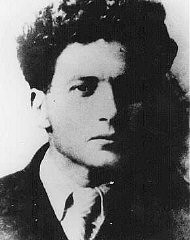
Mordechai Chaim Rumkowski, Jewish council chairman in the Lodz ghetto, seen here speaking amongst Jewish ghetto policemen. Lodz, Poland, ca. 1942.
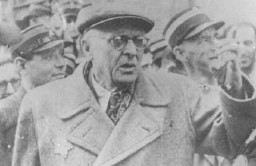
Lodz ghetto Jewish council chairman Mordechai Chaim Rumkowski delivers a speech. Lodz, Poland, 1941–43.
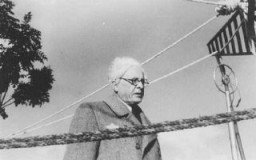
Born in Riga, Morris Hillquit became a prominent theoretician of the socialist movement after immigrating to the United States. The German translation of his work Socialism in Theory and Practice was burned in Nazi Germany in 1933. Photo taken circa 1910–1915.
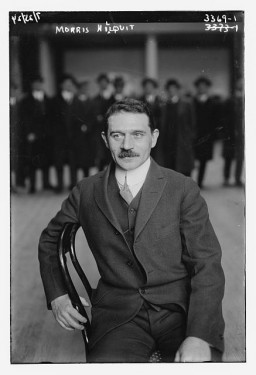
Ida Baehr Lang holding her infant daughter, Freya Karoline, in Lambsheim. Ida died in the mid-1940s after deportation to Auschwitz. Freya survived in hiding in France and reunited with her father in 1946. Lambsheim, Germany, ca. 1934.
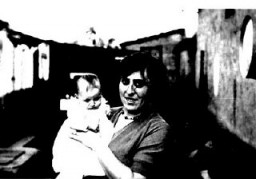
Portrait of Mother Superior Alfonse, who hid Jewish children from the Nazis in the Dominican Convent of Lubbeek near Hasselt. Yad Vashem recognized her as Righteous Among the Nations. Belgium, wartime
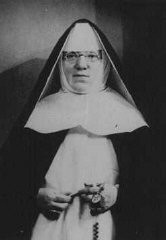
The motto of Mordechai Chaim Rumkowski, chairman of the Lodz ghetto Jewish council: "Our only path [to survival] is [through] work." Lodz, Poland, wartime.
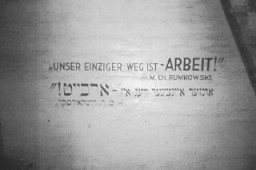
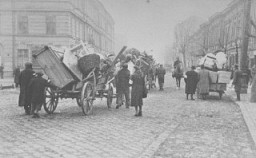
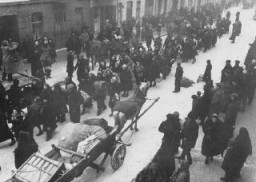
Mugshot of Colonel Joachim Peiper, defendant in the Malmedy atrocity trial. He was sentenced to death by hanging. Photograph taken ca. 1946.
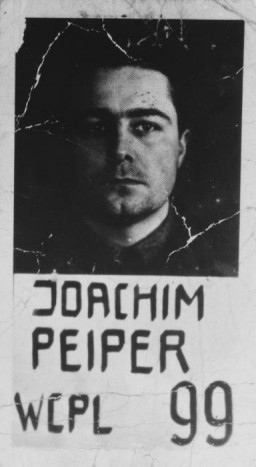
Visitors stand in front of the quotation from Martin Niemöller that is on display in the Permanent Exhibition of the United States Holocaust Memorial Museum. Niemöller was a Lutheran minister and early Nazi supporter who was later imprisoned for opposing Hitler's regime.
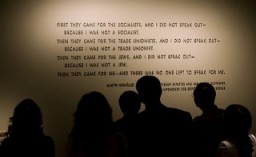
During a visit to Germany, Italian dictator Benito Mussolini (back to camera) speaks with (left to right): SS chief Heinrich Himmler; Nazi propaganda minister Joseph Goebbels; and Nazi governor of Poland Hans Frank. Germany, 1941.
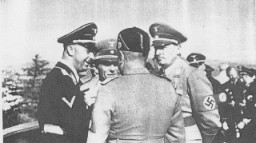
Italian Fascist leader Benito Mussolini (center) with aides and supporters. They are wearing the attire which gave them the name of blackshirts. Italy, 1920s.
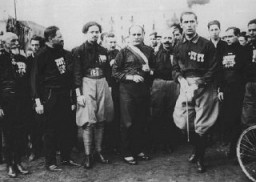
United States delegate Myron Taylor delivers a speech at the Evian Conference on Jewish refugees from Nazi Germany. Evian-les-Bains, France, July 15, 1938.
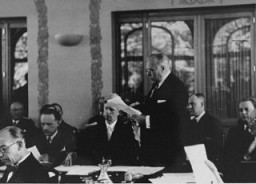
Myron Taylor, US delegate to the Evian Conference, pleads for the establishment of an intergovernmental committee to facilitate Jewish emigration. Evian-les-Bains, France, July 15, 1938.
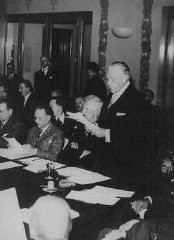
Nazi propaganda often portrayed Jews as engaged in a conspiracy to provoke war. Here, a stereotyped Jew conspires behind the scenes to control the Allied powers, represented by the British, American, and Soviet flags. The caption reads, "Behind the enemy powers: the Jew." Circa 1942.

The beginning of a ceremony to dedicate a new SS hospital in Auschwitz-Birkenau. A Nazi soldier salutes as the Nazi and SS flags are raised while a line of troops stand with rifles at attention during the dedication. From Karl Höcker's photograph album, which includes both documentation of official visits and ceremonies at Auschwitz as well as more personal photographs depicting the many social activities that he and other members of the Auschwitz camp staff enjoyed. These rare images show Nazis…
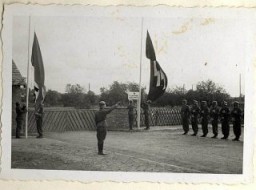
Belgian politician Léon Degrelle (center) stands in formation with fighters from the Belgian Volunteers who are on their way to fight in the Soviet Union. Belgium, August 15, 1941. During World War II, Degrelle founded a collaborationist military force that fought on the eastern front.
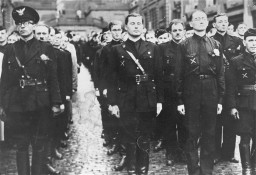
Victor Brack, one of the Nazi doctors on trial for having conducted medical experiments on concentration camp prisoners. Nuremberg, Germany, August 1947.
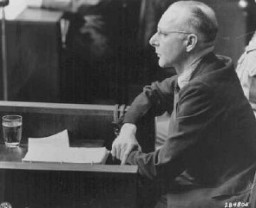
Nazi propaganda cartoon by Seppla (Josef Plank), a political cartoonist. Germany, date uncertain [probably during World War II]. Beginning in the 1920s, Nazi propagandists promoted the antisemitic myth that Jews were engaged in a massive conspiracy to take over the world. This false notion alleged that “international Jewry” used various people and groups as part of a plan for global conquest. At the time, an octopus extending its tentacles over the globe was a common visual metaphor for this…
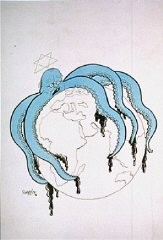
Nazi eugenics poster entitled "Feeble-mindedness in related families in four neighboring towns." This poster shows how "feeble-mindedness" and alcoholism are passed down from one couple to their four children and their families. The poster was part of a series entitled, "Erblehre und Rassenkunde" (Theory of Inheritance and Racial Hygiene), published by the Verlag für nationale Literatur (Publisher for National Literature), Stuttgart, Germany, ca. 1935.
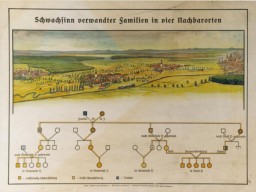
Psychiatric patients are evacuated to clinics where they will be murdered as part of the Nazi Euthanasia Program. Photo taken in Germany and dated circa 1942–1944. The term "euthanasia" usually refers to causing a painless death for a chronically or terminally ill individual who would otherwise suffer. In the Nazi context, however, "euthanasia" was a euphemistic or indirect term for a clandestine murder program that targeted individuals with physical and mental disabilities.
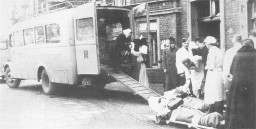
Nazi district leader of Franconia Julius Streicher (right), propaganda minister Joseph Goebbels (second from right), and other Nazi officials attend the opening of the exhibition Der ewige Jude (The Eternal Jew). Munich, Germany, November 8, 1937.
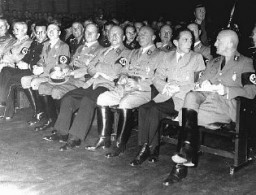
Nazi official Julius Streicher, founder of the antisemitic journal Der Stuermer (The Attacker) and organizer of the anti-Jewish boycott. Munich, Germany, ca. 1933.
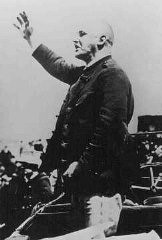
Nazi officials and Catholic bishops listen to a speech by Wilhelm Frick, Reich Minister of the Interior, at an official ceremony in the Saarbrucken city hall marking the reincorporation of the Saarland into the German Reich. March 1, 1935. Among those pictured is Joseph Goebbels (seated at the far right), Franz Rudolf Bornewasser (Bishop of Trier) and Ludwig Sebastian (Bishop of Speyer).
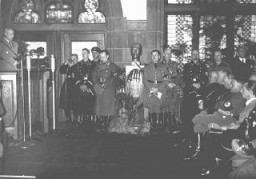
We would like to thank Crown Family Philanthropies, Abe and Ida Cooper Foundation, the Claims Conference, EVZ, and BMF for supporting the ongoing work to create content and resources for the Holocaust Encyclopedia. View the list of donor acknowledgement.